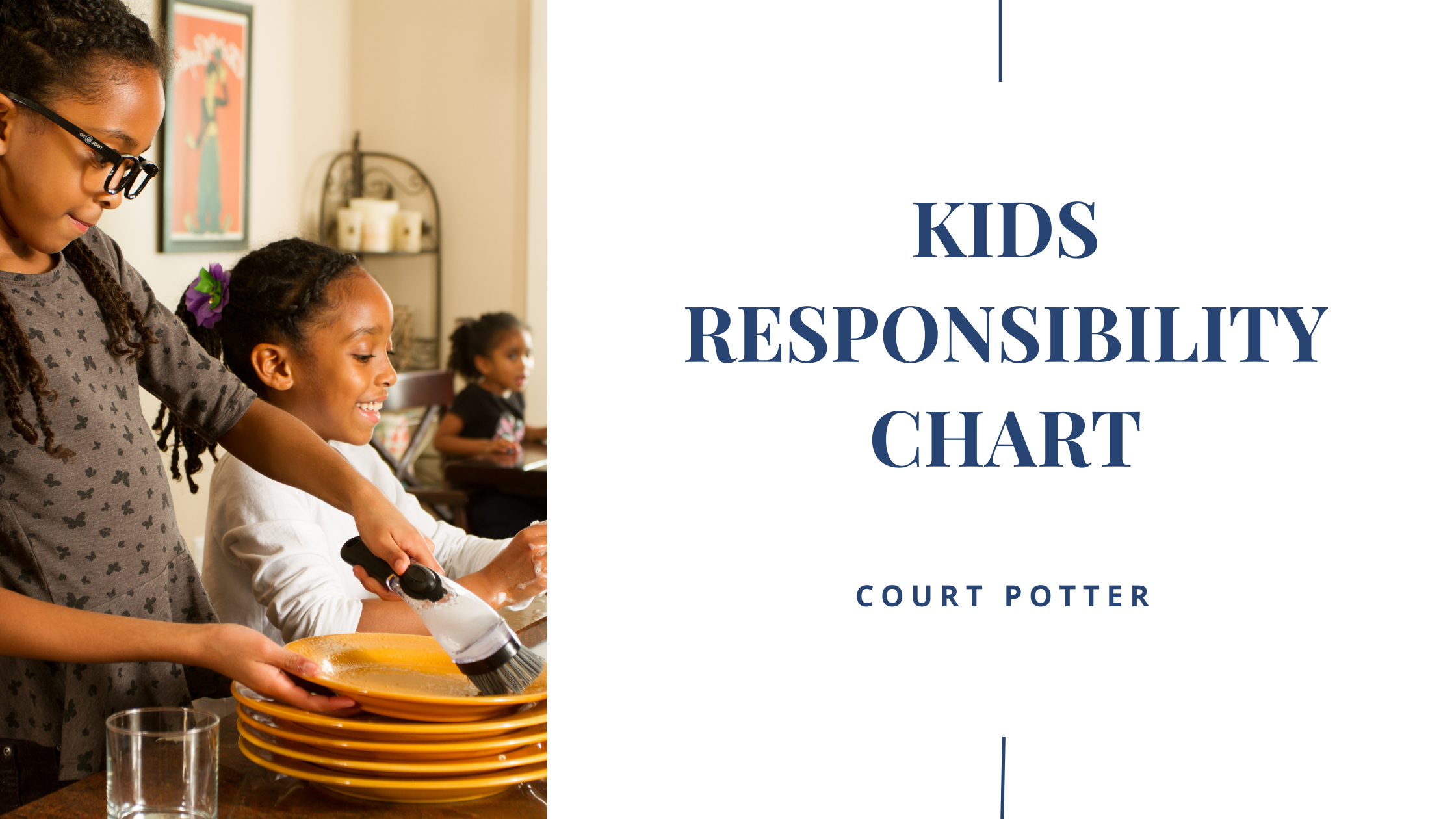

KIDS RESPONSIBILITY CHART
Kids Responsibility Chart
Teaching children accountability, responsibility, and money management skills is essential for building strong character. But, hell, now and days we’re just trying to keep our head above water and remind them to brush their teeth every day.
But what if there was a better way? One where everyone knew what to do, when to do it and how to do it? Then you could pat yourself on the back as they grow up into a successful adult and profess their love for you at their very public speech later in life. But seriously, providing children with the necessary understanding of how their current decisions impact rewards can help them in the future personal discipline structures.
In saying that, let’s be real, creating structure for any of us at any age can have its challenges. However, I have found that if done correctly (for all of us!), can surely have way more rewards then ‘penalties’ in the long run. Introducing these topics early in life (and at reasonable measures) can provide children so much confidence. It makes them feel like they know what to do and what’s expected of them. All by a simple list, but with a fun twist.
WHY A RESPONSIBILITY CHART?
When creating a responsibility chart, it is important to make sure all roles and responsibilities are accurately outlined and represented. As you may know, the prefrontal cortex (PFC) is the cerebral cortex covering the front part of the frontal lobe of the brain. This is the part of the brain is where we process personality expression, decision making, and moderating social behavior. It is also not fully developed till around the age of 25. So, sometimes decision making can be off as the brain learns patterns and behaviors based on life experiences.
I say all that to remind you that a responsibility chart is not just something to make your life easier, but it is a way to help develop neural pathways in the brain for understanding how to structure the day, goals, and thoughts towards rewards in each task and responsibility. So it’s then approached with excitement rather than dread.
STEPS TO CUSTOMIZING YOUR RESPONSIBILITY CHART
. The first step in any task is to make a list. A list of tasks based on an individual’s age, skillset, and interest. Brainstorm all of the tasks that need to be completed. Make sure to consider any upcoming projects or deadlines that will require additional work or savings. Write down all tasks, prioritizing those that are most important and urgent or based on time of day like I’ve done.
The interest will lead to goals and then a timeline can be put in place.
Communicate the responsibility chart with all members of the family so everyone is aware of their roles and responsibilities moving forward.4. Build relationships with potential customers
Revisit and update the responsibility chart on a regular basis according to changes in capabilities, interest, and motivation but also schedules with sports, vacations, events, etc.
Tips for Making the Chart Effective
The responsibility chart should also consider any specific or big picture goals or responsibilities. Should various family members need to assist then be clear on when all have agreed for this to take place, then all expectations can be managed. That way it provides some freedom in allowing them to make some decisions on their own, with repercussions should they not follow through.
Finally, it is essential to ensure the responsibilities assigned are realistic and manageable enough so that they can be in fact successfully. Their nothing more deflating then having nothing but a list to do but without any reward.
Ways to keep everyone motivated:
Start by creating a timeline that outlines major upcoming milestones such as project deadlines or annual goals so you can properly assign resources accordingly to meet those targets effectively without overloading any one individual or team with too many responsibilities at once.
Break down each task so the basics are consistently met and reminded.
Ensure clear communication between as to what their roles and responsibilities are in relation to siblings so there’s no overlap between them and avoiding a potential argument.
Make sure everyone always has access to the responsibility chart – whether it’s shared digitally via an online document platform like Google Drive or printed out for reference (our favorite as it is out for all to see and be reminded).
Remember why you’re doing this too:
It gives children the opportunity to take ownership of their actions and be held accountable for them in a positive way.
You’re providing structure and guidance which helps children learn to manage their own time, resources, and tasks efficiently.
It’s creating positive life skills discipline as they develop their prefrontal cortex (PFC)- the part of the brain that is developing personality expression, decision making, moderating social behavior
Children can better understand the importance of completing tasks in a timely manner, using resources, responsibly and managing their own money wisely.
Encourages children to become independent thinkers while teaching them how to plan and make sound decisions that will benefit them in the long run.
With the right guidance from parents or caregivers, children can build confidence as they develop into mature individuals who are self-reliant and possess excellent problem-solving skills.
Teaching children about accountability, responsibility, and money management will help them to realize the importance of having good personal and financial habits as well as the necessity of maintaining a high moral standard when it comes to making decisions now and in the future.

Pulling **It Together
10 Things You Need To Know
When Your Loved One Is In The Hospital
Witness the peace of mind you and your loved ones will have knowing how to navigate the system to ensure you receive proper care!
Feel Confident knowing all will be fine with you and your loved ones’ future with this guide.
Guide is taught with subject matter expert, Timothy Poore with ATP Healthcare, a post acute care placement agency for hospitals, rehabilitation facility, at home care, and patients.
Go to the Courses Tab for more information.




